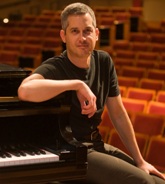
Lynn Tuttle
Common Core is Here—Don't Panic!
Posted by Sep 10, 2012

Lynn Tuttle
 The Common Core standards in English Language Arts (ELA) and Mathematics are driving factors in the educational reforms facing public education today. As an arts educator in the schools, as a teaching artist who provides supplemental instruction with students in and out of school, as a cultural organization working to partner with a school, and/or as an arts education advocate, how can you approach the Common Core standards?
The Common Core standards in English Language Arts (ELA) and Mathematics are driving factors in the educational reforms facing public education today. As an arts educator in the schools, as a teaching artist who provides supplemental instruction with students in and out of school, as a cultural organization working to partner with a school, and/or as an arts education advocate, how can you approach the Common Core standards?
As information swirls around this topic, I am reminded of The Hitchhiker’s Guide to the Galaxy, and I begin by recommending the first rule of galaxy hitchhiking, or in this case, connecting to the Common Core: DON’T PANIC! Here are the reasons why I believe panic is misguided:
1. The Common Core standards, while they expressly contain literacy references across the curriculum, do not replace content standards in other subject areas. Teaching the arts still means teaching to arts standards. Arts standards are set by your state—visit the State Arts Education Policy Database to find your state’s standards.
a. You can also remain up to date on the revision of the National Arts Education Standards—the basis for most state standards—at the National Coalition for Core Arts Standards wiki.
2. The Common Core ELA/Literacy standards are ripe with places of deep connection to the arts. These standards ask for very strong instructional shifts in the teaching of literacy. I encourage you to research these instructional shifts—my favorite way to dig into them is watching the NY State videos done by David Coleman, soon to be head of The College Board
3. Instructional shifts of interest (and relative ease?) to arts educators:
a. Focus on the text in order to answer questions raised in class. Reading and comprehending text is the end goal of these ELA standards. While theatre certainly includes text reading as part of its discipline, all arts areas include texts within the critique and evaluation parts of our disciplines.
b. IF you use a very broad definition of text to include any primary source material, then you can practice the tools of the ELA Common Core standards by closely “reading” or analyzing a painting, a dance, a musical performance. The work we do in the arts—to engage students in critically approaching artistic works—is an almost natural fit with the Common Core ELA standards.
Read More

 John Eger
John Eger












